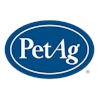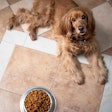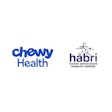
Quality control procedures boost efficiency, ensure consistent pet food products and reduce the potential for recalls, but quality control can go beyond that to become a marketing tool for dog, cat and other pet food producers. For example, the Argentinian pet food industry may expand its domestic market and imports with enhanced quality control measures, Mariano Ortega, president of Argentina’s Asociación para el Desarrollo Social Empresario (Association for Entrepreneurial Social Development), said during his presentation at the Latin American Pet Food Congress (Congreso de la Industria de Pet Food en America Latina, CIPAL), Sept. 28 in Buenos Aires, Argentina.
Argentinian pet food market size
Currently, market researchers at Technavio estimate Argentina’s pet food market to be worth US$207.8 million. They forecast Argentina’s pet food market to experience year-over-year growth of 2.54% this year, with a compound annual growth rate of 2.76% between 2021 and 2026.
Technavio’s estimate for Argentina’s current pet food market value falls far short of the US$1 billion estimated by Francisco Schang, director of Argentinian Chamber of Animal Nutrition Companies (CAENA) writing in Global PETS. Schang reported that Argentina produced 764,000 tons of pet food. Economy-priced products predominated, making up 40% of the country’s production. Premium pet foods made up 27% of production, with superpremium at 18%. In 2021, 18% of Argentinian pet food production was destined for exportation.
Quality control to boost pet food market
Both those Argentine pet food exports and domestic market share could be boosted by using quality control as a marketing strategy, Ortega said.
“On the international market, products can differentiate from competitors with design, brand, marketing, functionality or other qualities,” he said. “However, these characteristics don’t matter, if the quality isn’t guaranteed.”
The experience of Japan serves as a model for how quality control can transform an economy, he said. In the post-World War II period, as the country struggled to rebuild, business advisors from the United States guided Japanese manufacturers to develop their quality control standards and standardize production. Japan is now one of the planet’s largest economies. Japanese products now have a reputation for quality and dependability.
Argentina now has a national quality plan, designed to encourage international exports and domestic market share, he said. Especially when exporting to countries with strict pet food safety regulations, such as the United States, quality control can help pet products cross borders. Certified quality control standards, such as those set forth by the International Standard Organization (ISO), provide assurances that pet food products have been made safely. Those quality control assurances may help pet food makers in Argentina and around the world to expand their distribution.

